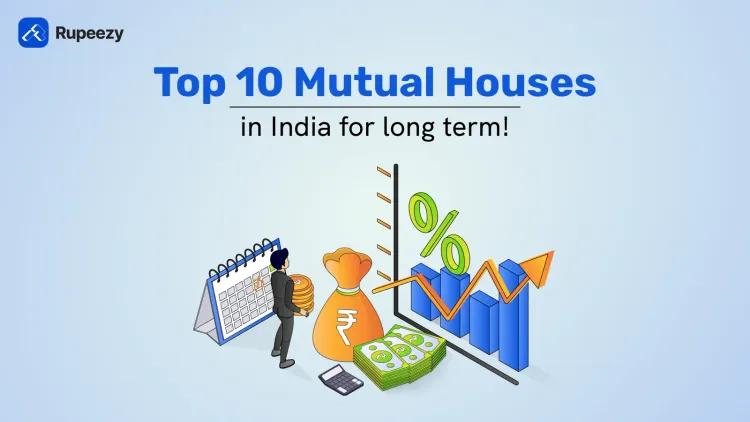What is a Contra Fund? Features, Benefits & How to Invest


00:00 / 00:00
Legendary investor Warren Buffett is known for his principle of “Buy Low, Sell High”, which resonates with investors across the world. However, this strategy is hard to apply in reality. Many investors avoid buying company stocks during downturns and instead risk their capital chasing trending stocks. Buying when prices are low and holding for a longer period can result in substantial gains. There are mutual funds that resonate with this strategy. It is known as a Contra Fund. This article explains what a contra fund is, its features, how to invest, and more. Let’s continue to learn more about Contra Funds.
What is Contra Fund?
A Contra Fund is a type of mutual fund that invests in stocks that the markets usually avoid. The fund manager analyses companies that hold good potential but are not popular in the market currently due to bad news or weak economic trends. They buy these stocks when prices are low and wait for their value to rise when the market mood changes.
This fund does not follow the market trends but does the opposite. It needs patience because returns may take time. There is an underlying factor where the market is irrational and often underpriced or overpriced company valuations. So, there is a perspective where the fund managers can think that the value of a mispriced asset can reach its intrinsic value at some time. People who stay invested longer can benefit when ignored stocks come back in favour.
How Does It Work?
The fund manager invests in stocks or sectors that the market currently avoids or companies facing downturns and that don’t perform. Fund managers actively search for companies that hold strong fundamentals but face negative sentiment.
So, fund managers invest in these stocks at lower prices and valuations and hold them patiently, expecting them to recover when the market sentiment improves. This contrarian strategy aims to buy low and sell high while balancing the portfolio by not following market hype. Investors need to stay invested for the long term because these bets may take time to deliver results. A Contra Fund also spreads risk by diversifying across multiple sectors that look unattractive for the market but hold potential for recovery.
Key Features of Contra Funds
Here are some of the key features of Contra Funds:
Contrarian Strategy: Contra funds invest in stocks and sectors that the market currently doesn't like. Fund managers actively pick undervalued or ignored companies and wait for the market sentiment to turn positive, aiming to generate higher long-term returns.
Long-Term Horizon: Contra Funds work best when you stay invested for the long term. Since they bet against prevailing trends, they need time for market cycles to change and unlock the hidden value in neglected stocks or sectors.
Diversified Portfolio: These funds hold a diversified basket of out-of-favour stocks to spread risk. The fund manager balances unpopular picks across sectors to ensure no single bad bet impacts the overall returns drastically.
Active Management: A contra fund will be managed by an experienced fund manager, who will make decisions based on strong conviction. The manager has actively analysed trends, ignored short-term noise, and made bold buy-sell decisions when the market mood shifts.
Higher Risk-Reward: Contra funds often carry higher risk but can reward patient investors. They might underperform during bull runs, especially when everyone is chasing hot stocks, but they can outperform when ignored stocks recover strongly.
List of Contra Mutual Funds
After understanding the key features, we will look at some of the best contra mutual funds and the table below:
Scheme Name | AUM (Rs Cr) | 5Y Returns |
45,495.71 | 34.22% | |
18,398.02 | 26.04% | |
4,283.33 | 27.35% |
*Note: The above data is considered as of 03rd July 2025, and they are subject to market fluctuations.
Who Should Invest in Contra Funds?
Investors who have a high-risk appetite and a long-term horizon can consider Contra Funds. These funds suit people who stay calm when the market moves against their portfolio and trust the fund manager’s strategy.
If you can stay invested for at least five to seven years without worrying about short-term underperformance, a Contra Fund may work well for you. It’s ideal for investors who want to diversify their equity portfolio with a different approach that doesn’t follow market trends. Beginners who lack patience or need quick returns may not find Contra Funds comfortable. Always align your goals, risk profile, and discipline to avoid disappointment when the market doesn’t favour contrarian bets quickly.
Benefits of Investing in Contra Funds
There are some benefits to investing in Contra Funds, and here are some of them:
Buy Low Opportunity: Contra Funds can help investors buy undervalued stocks when most of the market avoids them. This approach creates a chance to earn better returns when the market later recognises the true value of these ignored companies.
Diversification: These funds diversify across sectors and companies that are out of favour. This helps balance risks because underperformance in one stock may be offset by gains in another when market trends change.
Professional Management: The fund managers who actively handle Contra Funds are experienced. They use in-depth research and bold strategies to pick stocks with recovery potential, which retail investors may not be able to identify on their own.
Hedge Against Market Euphoria: Contra funds act as a hedge when the market overheats. By investing in sectors ignored by the market, they balance a portfolio that might otherwise be exposed only to trending or overvalued stocks.
Potential for Better Long-Term Returns: Patient investors may benefit from significant gains as out-of-favour stocks recover. Contra funds can outperform when markets turn and neglected sectors regain investor interest.
Risks of Contra Funds
As we looked into some of the benefits of contra funds, there are some risks associated with it:
Long Waiting Period: Strategies such as Contra may take more time to deliver the desired results. If the expected turnaround doesn’t happen in the medium term, investors can feel trapped and invest for years to see meaningful returns.
Miscalculated Bets: A contrarian bet can fail if the market’s negative view is justified. If a company’s problems, like losing market share, governance issues, regulatory issues, and other factors, can last for a longer period, the stock may not recover, leading to losses.
High Volatility: Contra Funds may face higher short-term ups and downs. Because they pick unpopular stocks, their prices can swing more compared to mainstream equity funds.
Requires Strong Discipline: Investors need discipline and patience to stick with the fund. Many panic and exit early when they see short-term underperformance, missing long-term gains.
Fund Manager Dependency: Success depends heavily on the manager’s skill and conviction. A poor stock selection or wrong timing can drag returns for years because contrarian picks need precise execution.
Contra Funds vs Value Funds
In this section, we will understand some of the key differences between Contra fund and Value Fund, which are as follows:
Aspects | Contra Funds | Value Funds |
Strategy | Invest against the current market sentiment | Pick undervalued stocks trading below their intrinsic value |
Focus | Bet on out-of-favour sectors or unpopular stocks | Target fundamentally strong but undervalued companies |
Timing | Time market cycles by going the contrarian way | Stay patient for price discovery |
Approach | Take positions that defy crowd behaviour | Use classic value-investing filters like low P/E or P/B ratios |
Risk | Carry a higher risk due to unconventional bets | Carry moderate risk with broader value exposure |
Volatility | See higher short-term volatility | See moderate volatility |
Overlap | May overlap with value style, but it's a contrarian way to act more aggressively | May hold some contrarian picks, but it sticks to the core value investing |
Example | Invest in beaten-down PSUs or cyclical sectors during a slowdown. | Invest in companies with strong financial strength. |
All contra funds follow value style, but not all value funds are contra; the difference is how aggressively they go against the crowd. In the SEBI circular, they have clearly defined categories of the fund. You can refer to this Categorization and Rationalization of Mutual Fund Schemes for more clarity.

Earlier, there were other funds from the mutual fund houses like Tata, Axis, and others. As the Contra Fund and Value Fund were overlapping in terms of objective, many might have shifted the Contra Fund to other existing funds or moved to Value Funds. However, the contrarian view provides the fund a different kind of investment objective to investors who like to align their goals.
How to Choose the Right Contra Mutual Fund
To choose the right Contra Mutual Fund, check the fund’s long-term performance across different market cycles to see how well it handled downturns and recoveries. Look at the fund manager’s experience and track record because contrarian investing needs strong conviction and skill.
You can review the portfolio to ensure it holds genuinely undervalued stocks across diverse sectors, which spreads risk. Compare expense ratios to avoid paying extra charges that impact its returns. Check if the fund aligns with your risk tolerance and long-term goals because contra funds need patience and discipline. Finally, avoid chasing short-term returns and focus on consistent performance and stable Asset under Management (AUM) growth instead.
How to Invest in Contra Mutual Funds
To invest in the Contra Fund, you can open a demat account in short period through registered brokerage firms like Rupeezy, and here are the steps to invest in a Contra Fund:
Step 1: Download the Rupeezy Trading App from the Play Store.
Step 2: After downloading the app, open it and complete the necessary KYC compliance procedures.
Step 3: After KYC compliance, you can login to your account and tap the ‘Explore’ icon in the bottom navigation menu.
Step 4: Choose the fund category as Equity and choose the Contra Fund option.
Step 5: Browse and compare available funds in that category using the Risk-Return graph to see how they perform.
Step 6: Pick the Contra Fund that matches your goals and risk appetite.
Step 7: Select your investment mode, like Lump Sum or SIP (Systematic Investment Plan).
Step 8: Enter your investment amount and complete the payment securely through UPI or Net Banking.
Step 9: Track and analyse your investments through the Rupeezy App.
Conclusion
As we conclude the article, we looked at what is Contra Funds are and how it offers investors a smart way to benefit from undervalued opportunities when others stay away. They demand patience, discipline, and trust in the fund manager’s contrarian strategy. Investors with a long-term horizon and higher risk appetite can use Contra Funds to diversify their portfolio and aim for steady gains as neglected stocks bounce back. Stay focused and invest wisely to make the most of this unique approach. Approach and consult a financial advisor to make informed decisions.
FAQs:
Q1. What are the examples of contra funds?
Some of the examples include SBI Contra Fund, Invesco India Contra Fund, and Kotak Contra Fund, which actively follow a contrarian strategy.
Q2. Is it good to invest in a Contra Fund?
It can be good if you are willing to wait for a long-term period, and can handle short-term ups and downs while trusting the fund manager’s strategy.
Q3. When to Invest in Contra Funds?
Invest during any market phase, but stay invested for at least 5 to 7 years so the contrarian bets have time to recover and grow.
Q4. Are contra funds better than sectoral/thematic funds?
Contra Funds diversify across sectors, so they often carry less risk compared to narrow sectoral or thematic funds, which depend heavily on one theme’s success.
Q5. What are some of the best contra funds in India
Best contra funds in India include SBI Contra Fund, Invesco India Contra Fund, and Kotak Contra Fund, as per recent AUM and performance.
The content on this blog is for educational purposes only and should not be considered investment advice. While we strive for accuracy, some information may contain errors or delays in updates.
Mentions of stocks or investment products are solely for informational purposes and do not constitute recommendations. Investors should conduct their own research before making any decisions.
Investing in financial markets are subject to market risks, and past performance does not guarantee future results. It is advisable to consult a qualified financial professional, review official documents, and verify information independently before making investment decisions.

All Category









